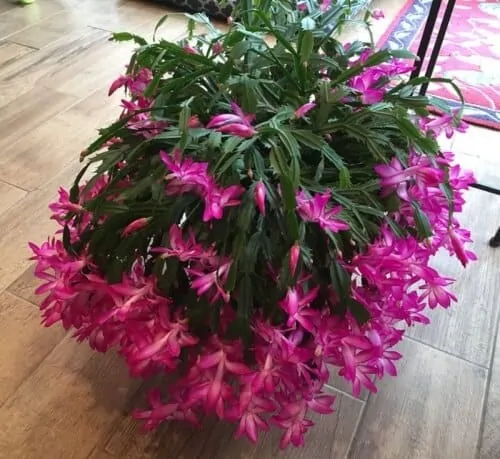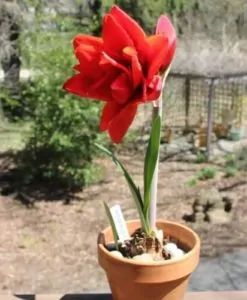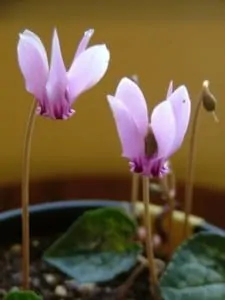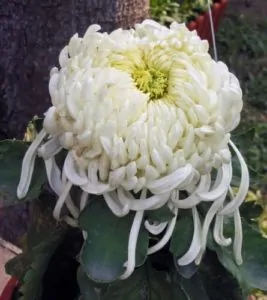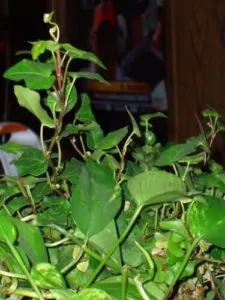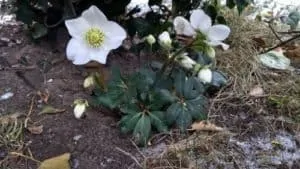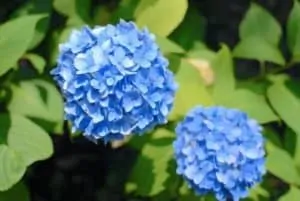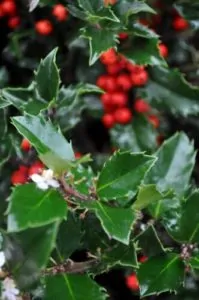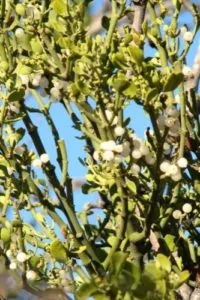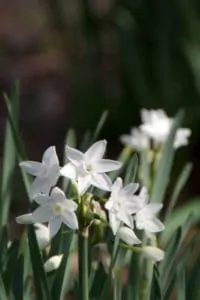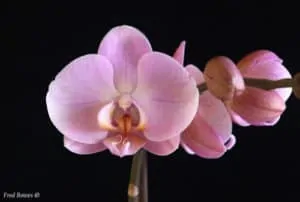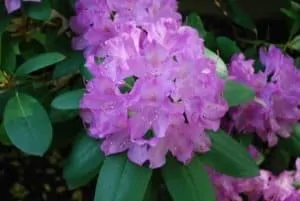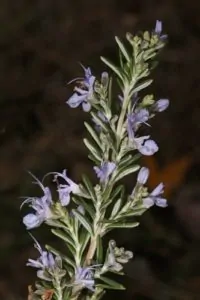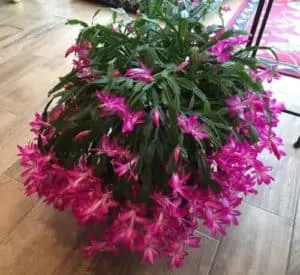Decorating for the holidays is not an easy task. Apart from the aesthetic, you also have to keep symbolism and modern trends in mind. This is why we have created a list of 13 Christmas plants to help you decorate your home and offer some fun green-thumb trivia to your guests.
1. Amaryllis
Image by Aka Hige; license under CC BY-SA 2.0
Move over Poinsettia, Amaryllis may just become the most popular Christmas plant. Sporting velvety red bell-shaped flowers, this bulbous elegant plant is gaining popularity by the year, adorning homes and restaurants during the holidays.
Toxicity
Poisonous to petsOther names
Belladonna lily, Naked lady, Amarillo, Easter lilyTemperature
68 - 70 Fahrenheit (20-21 Celsius)Native
South Africa2. Cyclamen
Image by Rebecca Partington; license under CC BY-SA 2.0
In the Victorian era, the Cyclamen was the go-to Christmas flower. In time, it was replaced by the now most popular Christmas plant, Poinsettia. However, the delicate, sturdier, beginner-friendly Cyclamen is making a comeback during the holiday season.
Also known as the poor man’s orchid, this colorful plant’s flowers can last up to 2-3 months, their color varying.
Toxicity
Toxic to petsOther Names
Poor man's orchid, Sowbread, Alpine violetTemperature
Prefers cooler temperaturesNative
Europe3. Dendranthema X grandiflorum Christmas plants
Image by 阿橋 HQ license under CC BY-SA 2.0
Bearing rich symbolism, the Chrysanthemums should occupy a noteworthy place in your home during the holidays, especially if you’re thinking about placing floral centerpieces on the table. Long associated with joy and optimism, the yellow flower was offered as a declaration of friendship during the Victorian era.
Toxicity
Toxic to petsOther Names
Mums, ChrysanthsTemperature
Above freezing temperatures, some varieties thrive in colder environments.Native
China4. Hedera
Image by billac license under CC BY 2.0
Ivy has been at the core of holiday celebrations since forever. Farmers used to feed their cattle a spring of ivy on Christmas Eve to ward of evil spirits. Others used an ivy leaf to determine their future. And there are the most pragmatic ones that used ivy wood to carve intricate goblets that would (please note the conditional) counteract the effects of alcohol poisoning.
Toxicity
PoisonousOther Names
Ivy, Bindwood, LovestoneLight Requirements
Can thrive in multiple light conditions from bright filtered light to low lightNative
Europe, N-E Africa, Asia5. Helleborus niger
Image by Thomas Kholer license under CC BY 2.0
Commonly known as the Christmas rose, the Hellenborus niger has nothing in common with the rose. A part of the buttercup family, it’s an evergreen poisonous perennial plant that flowers in the holiday season.
The Christmas rose gained its name from an old legend. It is said that a young girl from Bethlehem wanted to present baby Jesus with a present, but had nothing to give and started crying in despair. As her tears hit the white layer of snow, a beautiful, delicate flower sprouted from the ground.
Toxicity
PoisonousOther names
Christmas rose, Black helleboreTemperature
It needs above freezing temperatures to thriveNative
Europe and Asia6. Hydrangea
Image by Syoko Matsumura license under CC BY 2.0
The colorful hydrangea made this list because of its rich symbolism. Representing beauty, grace, and, most importantly, gratitude, the hydrangea’s generous flowers and harmonious colors make it the perfect Christmas centerpiece.
Toxicity
PoisonousOther Names
Hortensia, penny macLight requirements
Full sun in the morning and shade in the afternoonNative
Asia and South America7. Ilex aquifolium Christmas plants
Image by The Greenery Nursery and Garden Shop license under CC BY 2.0
Sporting evergreen leaves, Ilex – or traditionally, holly – has always been associated with life. Nowadays, we use wreaths of holly to decorate our homes for the holidays as they symbolize faithful love and everlasting friendship – you know – the spirit of the holidays.
Moreover, holly bears deep meaning in Christian tradition as it is considered a symbol of Jesus Christ, himself. According to Christian literature, holly’s sharp leaves symbolize Christ’s crown of thorns, the berries are the drops of blood He spilled for humanity, and the shape of the flower is an analogy to God’s burning love for humankind.
Toxicity
VERY TOXIC to humans and petsOther Names
Holly,evergreen winterberry, inkberry holly, gallberry, and bitter gallberryLight requirements
Prefers partial shade but can tolerate direct sunlight.Native
North America8. Mistletoe
Image by designatednaphour license under CC BY 2.0
Hanging mistletoe in the house is a tradition that dates back to the Druids. They believed that the parasitical plant holds supernatural powers and can ward off malevolent spirits and bring luck to the house. The custom was reinterpreted over the years and the plant gained a romantic feature to it as it is known that you must kiss your loved one under the mistletoe as the Greeks always associated it with fertility.
Toxicity
VERY TOXIC - deadly to pets, very harmful for humansOther names
ViscumTemperature
Not enough data for this plant, but it has thrived in conditions from 5 to 35 Celsius.Native
Europe, Africa and Asia9. Narcissus papyraceus
Image by houroumono license under CC BY 2.0
Paperwhites, a member of the daffodil family sporting star-shaped white, fragrant and showy flowers have become a traditional Christmas flower that adorns festive locations. A perennial bulbous plant, the Narcissus papyraceus usually blooms in early spring but can be forced to bloom on Christmas when grown indoors.
Toxicity
All parts are toxic and can cause severe irritations and an upset stomach.Other names
PaperwhiteTemperature
Prefers cool temperaturesNative
Mediterranean region10. Phalaenopsis
Image by CthreeA Cyprus license under CC BY 2.0
The symbol of solidarity, femininity, elegance, and spirituality, the Phalaenopsis is considered the perfect Christmas gift. From blue to yellow, white and salmon, these delicate flowers have become somewhat of a holiday staple.
Toxicity
Safe for petsOther names
Moth orchidTemperature
They enjoy the same temperatures as your average plant loverNative
Tropical countries11. Rhododendron
Image by slgckgc license under CC BY 2.0
Also bearing the name Christmas Cheer, Rhododendron is a shrub from the Azalea family that typically blooms in late winter – early spring. Its cheerful pink flowers usually bring a spot of color in any outdoor or indoor garden during the holidays.
Toxicity
All parts of the plant are poisonousOther names
Snow-rose, alpenrose, Christmas CheerTemperature
Can withstand up to -35 F (around 0 Celsius)Native
Asia (the national flower of Nepal)12. Rosemary
Image by Judy Gallagher license under CC BY 2.0
Rosemary may seem like a strange addition to a list of Christmas plants but hear us out. This fragrant herb has been long associated with the holiday season but lost its popularity at the beginning of the century when it was replaced by more spectacular Christmas plants.
Rosmarinus, aka dew of the sea, has long been associated with Christmas. While nobody can really pint point where it started being considered a holiday plant, the general consensus is that the association occurred because of the herb’s traditional meaning of love, friendship, and loyalty.
The rosemary shrub is an easy-maintenance Christmas plant that can bring flavor and freshness to your home.
Toxicity
Can cause intestinal irritation and kidney damage if ingested in large quantities.Other names
Compass Plant, Compass Weed, Encensier, Herbe Aux Couronnes, Old Man, Polar Plant, Romarin, Romarin Des Troubadours, Romero, Rose de Marie, Rose Des Marins, Rosée De Mer, Rosemarine, Rosmarinus officinalis, Rusmari, Rusmary.Temperature
Warm temperatures with good air circulationNative
Mediterranean region13. Schlumbergera x buckleyi
Image by OakleyOriginals license under CC BY 2.0
This quaint member of the cacti family gets its name after its blooming period. While in North America it is known as the Christmas cactus because its flowers bloom in late November – mid-December, in South America it bears the name of Easter cactus because it blooms around April.
While there is no story of yore to tie the Schlumbergera x buckleyi to the holidays, we decided to include it in this list of must-have Christmas plants because of its beautiful flowers (that can honestly rival Christmas tree decorations) and it’s peculiar blooming habits.
Toxicity
Non-toxic. Can cause mild stomach issues to pets if ingested.Other names
Christmas cactus, Holiday cactus, True Christmas cactus, Crab cactusTemperature
They love cool temperatures, but can't tolerate freezing conditions. Keep out of burning sunlight.Native
BrazilWe hope that this list of Christmas plants will help you decide on unique, fragrant home decorations this holiday season. As you may have probably notices we decided to leave out the top two contenders – the Christmas tree and Poinsettia because let’s be honest, they’re way too on the nose.
Happy holidays green thumbers!

